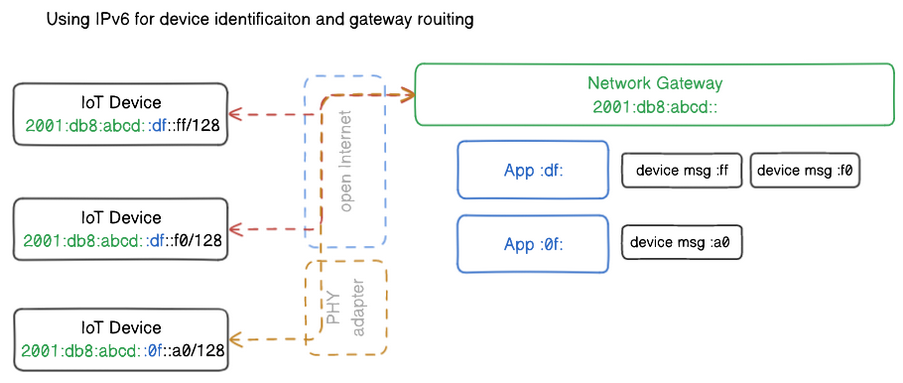Putting the Internet back in the things
Despite the name, the "Internet of Things" (IoT) has taken the Internet's promise of interoperability via shared protocols and replaced it with a terms of service and an arbitration clause.
The Hydrogen Plumbing project aims to rewire connectivity for low-power, low-bandwidth devices, leveraging existing Internet standards, including IPv6 and the Border Gateway Protocol (BGP), and building on unlicensed radio spectrum, and open hardware reference designs.
Protocols > Platforms
The tools necessary to fix IoT are part of the very architecture of the Internet. Yet, the Internet's core systems for data exchange and governance are underutilized as monolithic platforms crowd out decentralized, bottom-up approaches to network design.
Hydrogen Plumbing utilizes two of these foundational structures:
- regional Internet registries (RIRs), a global group of nonprofit organizations responsible for assigning and managing Internet addresses.
- BGP's decentralized framework for linking addresses via an interconnected network of autonomous systems.
These decades-old systems quietly power the Internet, and when combined with modern standards like IPv6, they offer possibilities for bringing billions of new connected devices online without building dependencies on centralized platforms.

The Hydrogen Protocol utilizes IPv6 addresses to identify and authenticate devices, secure wireless traffic, and support device roaming that spans network operators and wireless protocols. This approach combines several core features in IoT implementations, including end-to-end payload encryption and message brokering for asynchronous connectivity.
Device manufacturers can register with their RIR and receive a permanent IPv6 address block for device provisioning and routing infrastructure. Or, for development purposes, they can lease addresses from Hydrogen Plumbing's IPv6 address pool and utilize its hosted version of open source device provisioning and data services.
Learn how the protocol works »A modern, modular IoT stack
The Hydrogen Plumbing project is a set of methods and open source tools to help hardware developers integrate connectivity into their devices. This modular stack contains:
- A high-level protocol for lightweight IPv6 implementation explicitly designed for low-bandwidth wireless connections;
- A collection "adapters" for implementing the Hydrogen Protocol over different network physical layers (e.g., LoRa, Bluetooth, LTE/NB-IoT);
- A Rust SDK for developing secure, maintainable, vendor-agonistic Hydrogen-based embedded devices.
The project also designs and manufactures reference hardware devices that support Hydrogen Protocol implementation via standard wireless protocols, initially including LoRa, LoRaWAN, Bluetooth, OpenThread, Amazon Sidewalk, LTE Cat M, and NB-IoT. In addition to the reference hardware, the SDK utilizes Rust's embedded tooling, which enables the development and deployment of Hydrogen Protocol firmware on nearly any Arm or RISC-V device.
The Hydrogen Plumbing project is also developing an open source kit for converting surplus Helium Network LoRa gateways to the Hydrogen Protocol. These devices, often built on Raspberry Pi hardware and commercially available LoRa modems, can now be purchased used for a fraction of the original hardware cost.
Learn about hardware and SDK »